
![]() Address:189 Guo Shou Jing Road Zhangjiang High-Tech Park,
Address:189 Guo Shou Jing Road Zhangjiang High-Tech Park,
Pudong, Shanghai, China
![]() Postcode: 201203
Postcode: 201203
![]() Telephone number:
Telephone number:
86-21-5080-1313
![]() Fax number: 86-21-5080-0721
Fax number: 86-21-5080-0721
![]() Email:center@mail.shcnc.ac.cn
Email:center@mail.shcnc.ac.cn
Chemical biology is an interdisciplinary field of study that is often defined as "chemistry-initiated biology". It is expected that this emerging research field will open new avenues for comtemporary drug discovery and translational medicine. "Asian Chemical Biology Initiative" has been set up by a group leading scientists from China, Japan, Korea and Singapore to speed up pan-Asia chemical biology research and to promote academic exchanges among Asian countries.
The first executive meeting of Asian Chemical Biology Initiative was held at the Chinese National Compound Library (CNCL), Shanghai on October 28, 2011, with financial support from Shanghai Municipaity and Pudong Science and Technology Association. Dr. Ming-Wei Wang, Director of CNCL, hosted the meeting together with Dr. Motonari Uesugi of Kyoto University. Professor Raymond Stevens from the Scripps Research Institute (U.S.A) delivered an invited lecture followed by a series of open seminars given by all the participating executive members (see below). The event attracted more than 100 scientists and students from a number of local universities and research institutes, as well as from Hong Kong and Guangzhou.
This newly established initiative plans to hold annual meetings over the next five years in Hanoi, Manila, Bangkok and Kuala Lumpur, where top-notch Asian chemical biologists will get together to foster mutually beneficial collaborations and to recruit postraduate students from various Asian countries. The initiative has received significant funding from Japan Society for the Promotion of Science.
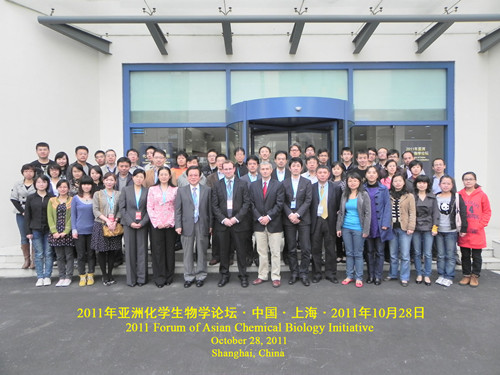 |
|
Group photo |
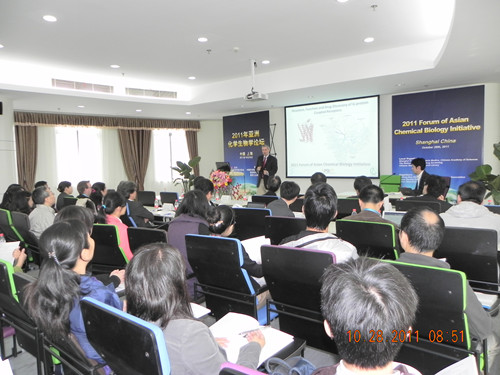 |
| Professor Raymond Stevens(the left) from the Scripps Research Institute (U.S.A) delivered an invited lecture |
 |
| Prof. Sunghoon Kim, Seoul National University, Korea |
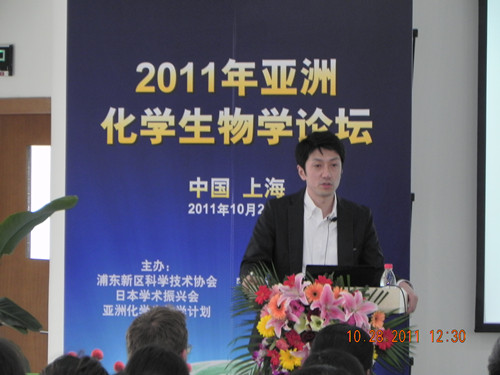 |
| Prof. Motonari Uesugi, Kyoto University, Japan |
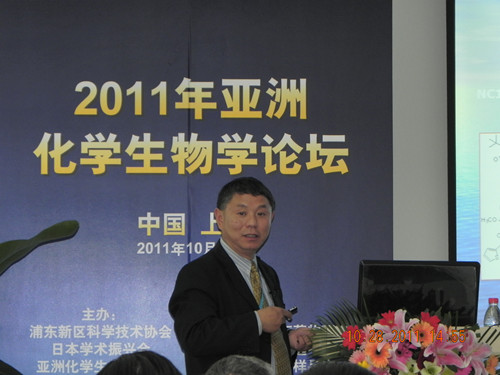 |
| Prof. Ming-Wei Wang, Chinese Academy of Sciences, China |
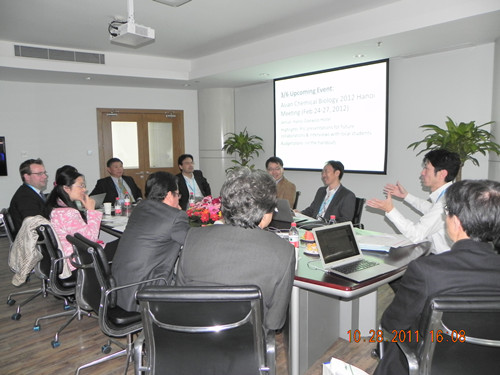 |
| The first executive meeting of Asian Chemical Biology Initiative was held at CNCL |